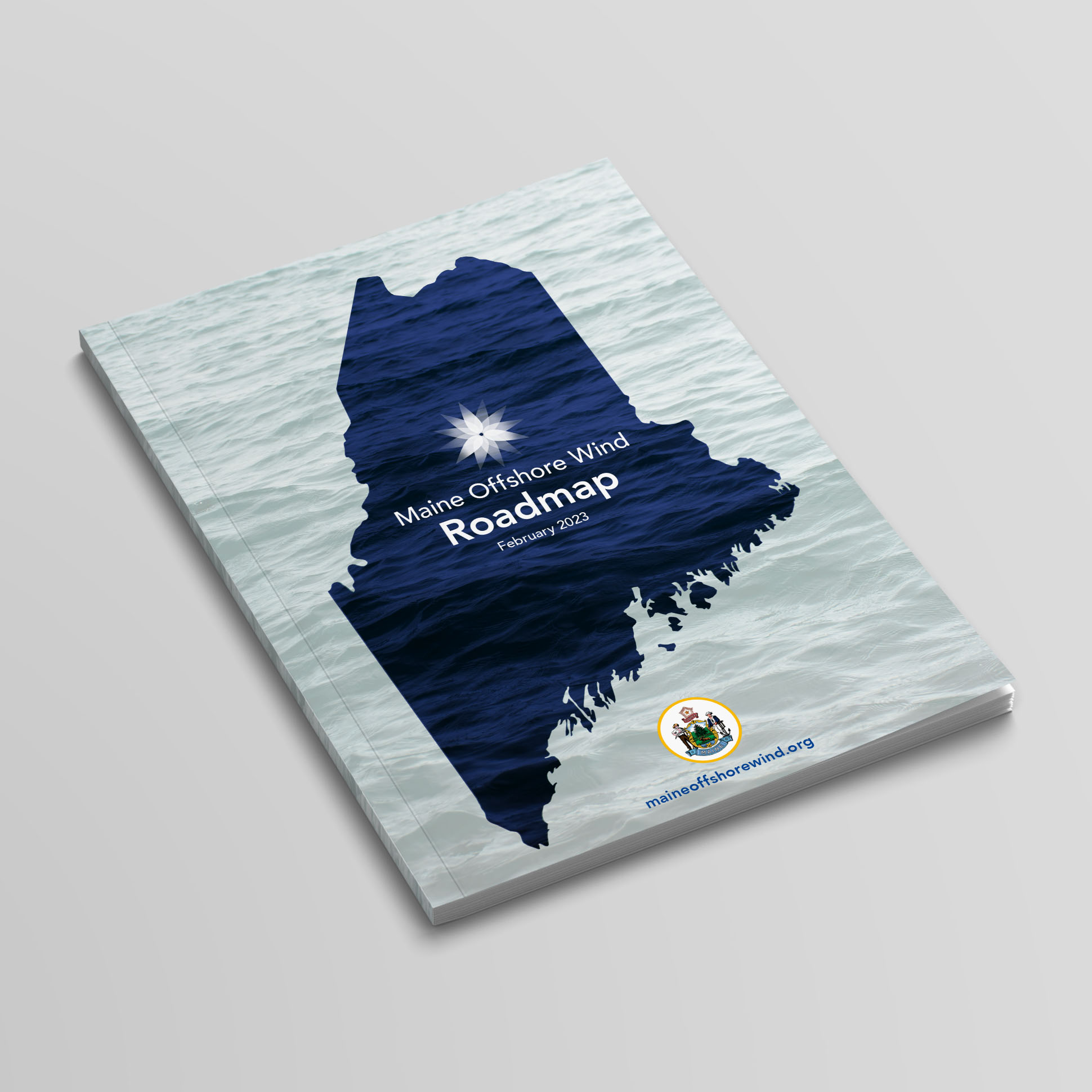News & Updates

Mills Administration Releases Comprehensive Plan to Responsibly Advance Offshore Wind in Maine
The Maine Offshore Wind Roadmap outlines strategies for Maine to benefit from offshore wind, while preserving Gulf of Maine communities, fisheries, and wildlife
Augusta, MAINE – The Governor’s Energy Office today released the Maine Offshore Wind Roadmap, a stakeholder-driven comprehensive plan that offers detailed strategies for Maine to realize economic, energy, and climate benefits from offshore wind, in conjunction with communities, fisheries, and wildlife of the Gulf of Maine.
The Roadmap was developed over 18 months in a robust public process led by a 24-person advisory committee with members from State agencies and energy, economic, fisheries, wildlife, science, and environmental leaders in Maine. The advisory committee was supported by four expert working groups on energy, economy, fisheries, and wildlife. Together, nearly 80 public sessions were held to develop the Roadmap.
Objectives of the Roadmap are organized around five key topics – supporting economic growth and resiliency, harnessing renewable energy, advancing Maine-based innovation, supporting Maine’s seafood industry, and protecting the Gulf of Maine’s ecosystem.
Key findings of the Roadmap include:
- Today, Maine has 80 companies engaging in the U.S.’s offshore wind industry, which is expected to generate $109 billion in private investment by 2030;
- Workforce opportunities in offshore wind cover nearly 120 occupations in Maine, such as engineering, electricians, metalworkers, marine operations, surveying, boat building and maintenance, and research and development.
- Over the long-term, offshore wind will reduce Maine and New England’s reliance on expensive, imported natural gas to generate electricity and meet an increasing demand for clean energy to curb carbon emissions and fight climate change;
- UMaine’s pioneering floating offshore wind research offers Maine an opportunity for leadership in this growing industry, as the S. works to achieve a national target of 15 gigawatts of floating offshore wind energy by 2045;
- Offshore wind must advance responsibly in Maine to preserve the state’s thriving marine economy, especially fishing, and protect the vital ecosystem of the Gulf of Maine and the individuals, communities and wildlife that depend on it.
To inform these objectives, the Roadmap commissioned several detailed technical studies of the economic, socioeconomic, and energy needs and impacts of offshore wind. To read the full Roadmap and all supporting studies, please visit maineoffshorewind.org/roadmap.
“Our state has the opportunity to unlock the power of offshore wind to generate clean, homegrown energy, lower energy costs, create good-paying jobs in a growing industry, and protect our environment for future generations,” said Governor Janet Mills. “The Maine Offshore Wind Roadmap, developed collaboratively by a wide range of stakeholders, offers a responsible, forward-looking plan for how we can harness the power of wind far off the coast in the Gulf of Maine to seize the economic and environmental benefits for our state in collaboration with industries, families, and coastal communities that we care so deeply about.”
“With the Maine Offshore Wind Roadmap, Maine has an outline on how to lead on responsible development of offshore wind that delivers on its vast potential to secure our energy independence, fight climate change, and strengthen Maine’s economy,” said Dan Burgess, Director of the Governor’s Energy Office, and Ret. Admiral Gregory Johnson, co-chairs of the Maine Offshore Wind Roadmap Advisory Committee. “In developing the Roadmap, the advisory committee and working groups engaged with fishermen, scientists, and others to address head-on important questions about how offshore wind can be compatible with the Gulf of Maine’s remarkable ecosystem and existing users. Through this process, and by leveraging groundbreaking new studies and data-driven insights, this Roadmap offers an informed path for maximizing offshore wind’s benefits to Maine in manners that also protect our people, communities, and the environment.”
“The Maine Offshore Wind Roadmap reflects consideration of the issues, needs and innovation to responsibly advance — and realize — a cleaner, affordable energy future for the state and its people,” said University of Maine President Joan Ferrini-Mundy. “As the state’s R1 university with research and development capacity, UMaine is proud to have set Maine on the path to benefit from the responsible advancement of offshore wind and now, as part of the Roadmap, to continue to lead Maine-based innovation to compete in the emerging national and global offshore wind industry. We appreciate the state’s leadership in this initiative — from recognizing the value of innovation to shape economic development to ensuring the future of the Gulf of Maine and the communities and industries that depend on it.”
The Maine Offshore Wind Roadmap, which was supported by a $2.1 million grant from the U.S. Economic Development Agency, is part of the Maine Offshore Wind Initiative, a multi-faceted approach to responsible offshore wind in Maine launched by Governor Janet Mills in 2019 and overseen by the Governor’s Energy Office.
The release of the Roadmap comes after the Bureau of Ocean Energy Management (BOEM) last month advanced an application by the State of Maine to lease a proposed site in Federal waters in the Gulf of Maine for a Floating Offshore Wind Research Array.
As the first project of its kind in the United States, the research array will foster cutting-edge research into the cost-effective operation of floating offshore wind and how it interacts with the marine environment, wildlife, the fishing industry, shipping and navigation routes, and more.
The array is proposed to include 10-12 turbines on semi-submersible floating concrete platforms known as VolturnUS, designed by the University of Maine’s Advanced Structures and Composite Center. The final size and location of the research site will be determined by BOEM during its leasing review process, which will continue this year.
Since the Maine Offshore Wind Initiative was launched in 2019, the pace of the offshore wind in the U.S. has accelerated as clean energy generation targets set by the Federal government and many states increase demand for commercial-scale projects in deep Federal waters, where floating platform technology will likely be required.
In September 2022, the U.S. Departments of Energy, Interior, Commerce and Transportation collectively announced a new initiative – the Floating WindShot — to accelerate floating wind by setting a national target of generating 15 gigawatts of energy from floating wind by 2045, and reduce the cost of this energy by 70 percent.
In January, BOEM released its draft area for potential commercial offshore wind leasing in the Gulf of Maine and held a series of public meetings across New England on its planning process leading up to its proposed sale of commercial offshore wind leases in the Gulf of Maine in 2024.
In advance of commercial leasing, Governor Janet Mills has pressed the U.S. Department of the Interior, which oversees BOEM, to involve Maine fishermen in Federal plans for leasing in the Gulf of Maine for commercial offshore wind.
To preserve State waters for recreation and fishing and cement into law Maine’s priority of locating offshore wind projects in Federal waters in the Gulf of Maine, Governor Mills in 2021 signed LD 1619, which prohibits new offshore wind projects in State waters.
The Mills Administration continues to encourage BOEM to increase its engagement with Maine stakeholders and the public as its leasing plans for the Gulf of Maine progress.
Other offshore wind initiatives include the Maine Offshore Wind Research Consortium, an assembly of fisheries, wildlife, and marine science and industry experts advising the State’s offshore wind research; evaluation of offshore wind port locations, led by the Maine Department of Transportation; and advocating for Maine’s interests in Federal plans for commercial offshore wind leasing through the Gulf of Maine Task Force.
In addition to GEO, the Roadmap received support from other state agencies, including the Maine Department of Marine Resources, the Department of Economic and Community Development, the Department of Inland Fisheries and Wildlife, the Maine Port Authority, and the Department of Transportation.
For more information on the Roadmap, please visit maineoffshorewind.org/roadmap.
